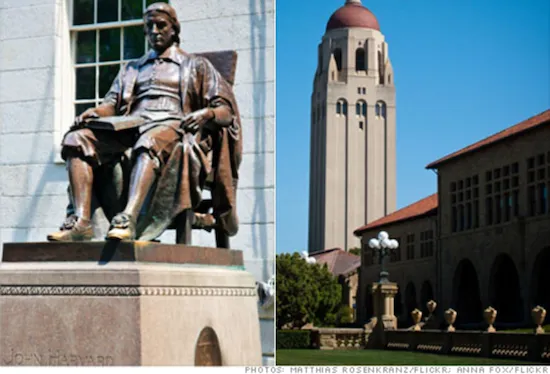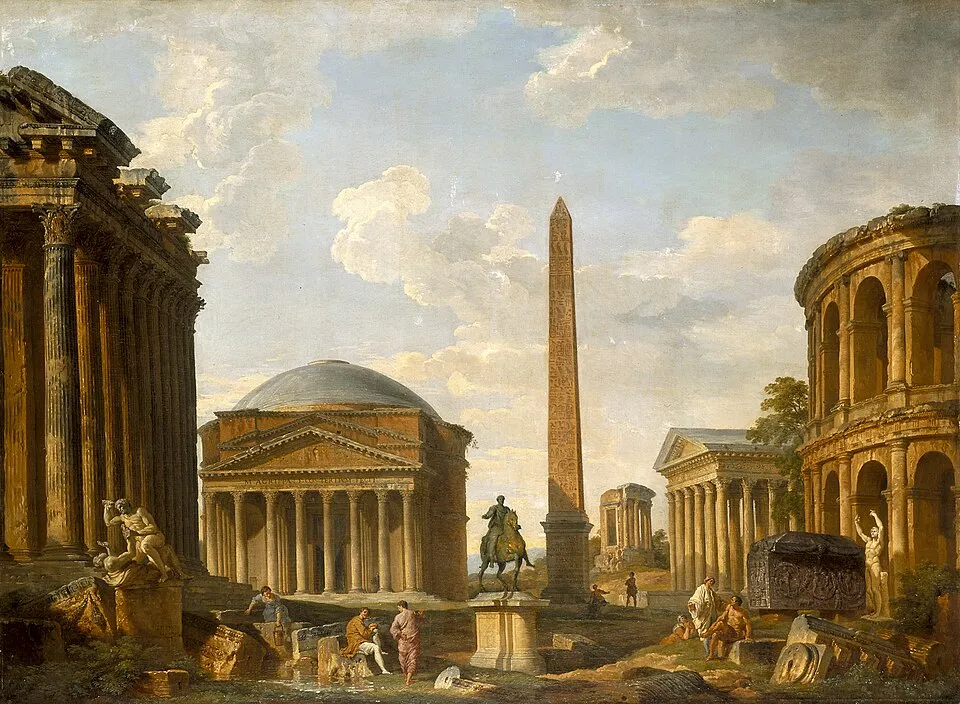Table of Contents
Stanford, dubbed America’s “dream college,” features a sun-drenched open campus with no walls, bountiful gardens, and plenty of palm trees. Its Spanish mission–inspired sandstone buildings, Hoover Tower, and Palm Drive are iconic. Behind the thousands of bicycles that whiz across the quad, some would argue, lies a startup incubator disguised as a university. Whether we’re called ducks, innovative thinkers, or cogs in the machine of Silicon Valley, stereotypes of the typical Stanford student proliferate.
The name Harvard, on the other hand, evokes images of red brick buildings lying on the Charles River, whose tide carries four-century-old waves of American history. When envisioning Widener Library, one cannot help but wonder which study nooks eight former U.S. presidents frequented. While walking through Harvard Yard, we keep an eye out for those freshmen who will rule over Wall Street and Washington’s chambers in twenty years time. Whatever form stereotypes of Harvard students take, there is an ever-present allusion to their being global leaders.
In the past, America’s two most elite schools were arguably Harvard and Yale. While these universities competed for the title of number one, their similarities outweighed their differences. Both were liberal arts universities, founded before the United States was born, that served the East Coast’s political and economic elite. For decades, they claimed to engage in a deep-seated rivalry — typified by the Harvard-Yale game — but they were, at least on the surface, the same. Much as Americans struggle to discern the distinction between the Oxford–Cambridge competition across the pond, strangers to the East Coast might have faced similar confusion when viewing Yale and Harvard. Now, however, the times have changed.
Rather than the grand competition transpiring over the Northeastern line of Amtrak, Stanford and Harvard now engage in a tense competition across coasts. Whether playing tug-of-war for lowest undergraduate acceptance rate or largest donation pool, these two institutions are neck and neck. Stanford is the Harvard of the West or Harvard is the Stanford of the East: it depends on who you ask. While loath to admit it, both universities are keenly aware of the other. Harvard is troubled by Stanford’s disruptive success and rapid climb up the ranking ladder. And while Stanford takes pride in breaking free from the Ivies’ stuffy old world traditions, under all that confidence, the Farm still admires Harvard’s liberal arts legacy and unparalleled hold over American policy, finance, and foreign affairs.
As a consequence, it seems that these two world-renowned institutions are striving to beat one another. Each universities’ administrators and alumni are attempting to alter their alma mater’s course to expand its reach and notoriety. In 2015, Harvard’s School of Engineering and Applied Sciences received a $400 million gift in order to promote innovation. Sounds familiar, doesn’t it? Whether in the form of venture capital organizations or emphasizing on Boston’s unique biotech, there is an evident push by Harvard’s administration to improve its technical offerings. Harvard does not want to be left in the old world. Conversely, weary of being labeled a vocational engineering school, Stanford endeavors to reassert its status as a world class liberal arts institution. The administration is reiterating the importance of interdisciplinary learning in the education of citizens. Be it Cardinal Conversations, CS+X, SLE, or ITALIC, there are a plethora of programs — both academic and extracurricular — that reinforce the administration’s commitment to, in the words of Professor Kennedy, “the university as a place of refuge, contemplation, and investigation for its own sake.” While Harvard is reaching for the future Stanford has paved, the Farm is grasping for the rich “disinterested pursuit of truth” that the Crimson has fostered for centuries.
Nevertheless, as much as universities try to keep up with the times — and with each other — the historical context in which they were established is difficult to escape. Both Stanford and Harvard cannot break free from the zeitgeist of their founding eras.
Stanford’s entrepreneurial and meritocratic focus is not a mere consequence of Silicon Valley. It was present from the university’s inception and throughout its growth. Rather than constructing an ivory tower, Stanford’s founding grant stated that the university would “qualify its students for personal success, and direct usefulness in life.” Indeed, Stanford’s first President, David Starr Jordan, was himself an angel investor. As the late William Miller reminds us, when Stanford opened its doors, California was only thirty-five years old. It was the Wild West: those who ventured out here were “pioneers,” not introspective elites. At the time, California had no legacy industries, so room for entrepreneurship was plentiful. Unlike Harvard, which was inspired by the European university model that existed to serve aristocrats, Stanford was based upon the groundbreaking German model of a research university (hence the German school motto). As Professor Russell Berman contends, “there’s a strong attention to the value of education in making practical improvements in society and the world” on the farm. Likewise, Stanford’s holistic inclusion of all genders and races as well as its original tuition-free structure further evince its anti-elitist spirit. Stanford was not founded in a European colony, but in a new state of a modern nation. Its principles were not mired in tradition, but pulsing with novelty: they were their own. Of course Stanford’s origins were checkered with stains of the past - appropriation of Native American land, Starr Jordan’s eugenicist views, and Leland Stanford’s commercial abuse of Chinese railroad workers are just some - but the university’s fundamental principles were rooted in liberty and opportunity.
Similarly, Harvard’s remarkable liberals arts and repute for producing global leaders is a product of its history. As the oldest higher education institution in the United States, Harvard was established when Massachusetts was still a British colony. While its campus may not feature Gothic architecture, its ethos was inspired by reminiscences of Oxford and Cambridge. During its founding by European settlers, the institution looked east for a university model which served to educate renaissance men, priests and politicians. Studies of the Bible, the Latin tongue, and theology were integral and the Old World permeated both curriculum’s teachings and the outlooks of its students. Harvard’s education was reserved for a special few: it was a bastion for Protestant elite. Harvard created thinkers, writers, and orators, instead of inventors and engineers. It birthed leaders, not vocational doers. Indeed, Harvard had no independent School of Engineering until 2007.
Where Stanford heralds technical alumni who precipitated the modern digital age, Harvard lays claim to eight United States Presidents and global heads of states as its alumni. Perhaps the distinct ethoses of the schools can be captured in the distinction between Victorian England and 19th century Europe: the former sat on the laurels of its imperial glory while the latter heralded the generation of new technologies and knowledge.
As Harvard attempts to bring its ivory tower down to earth, and Stanford attempts to elevate its own, these universities are seeking to measure up to one another. While Americans may like to think that legacy need not define one’s future, we must remember that reorienting an institution is like redirecting an aircraft carrier: they are bulky and slow to change. Even if Silicon Valley likes to move fast and break things, Stanford and Harvard cannot simply adopt each others’ defining features and diversify their portfolios. Stanford and Harvard are fundamentally different institutions from conception to the present.





